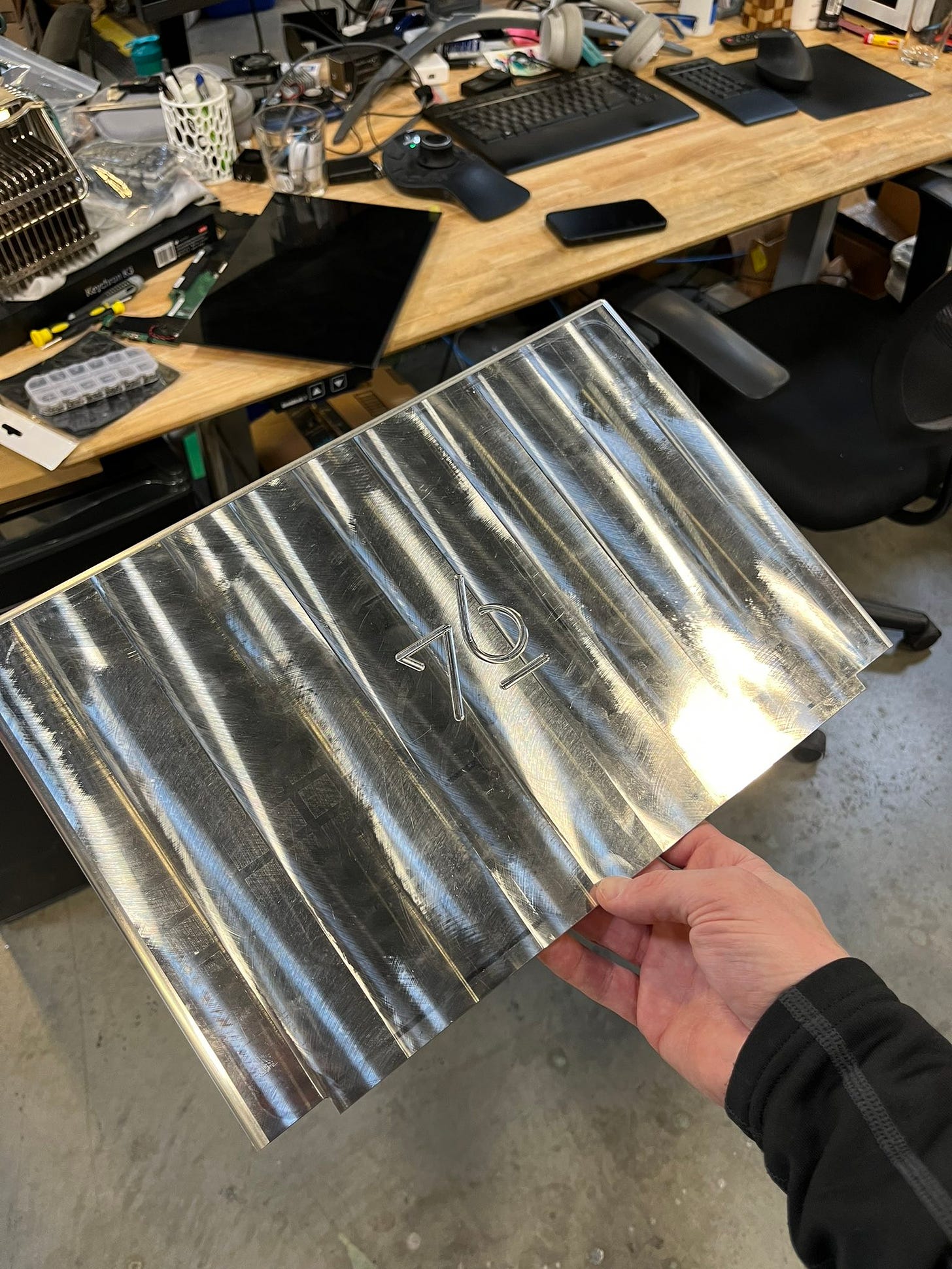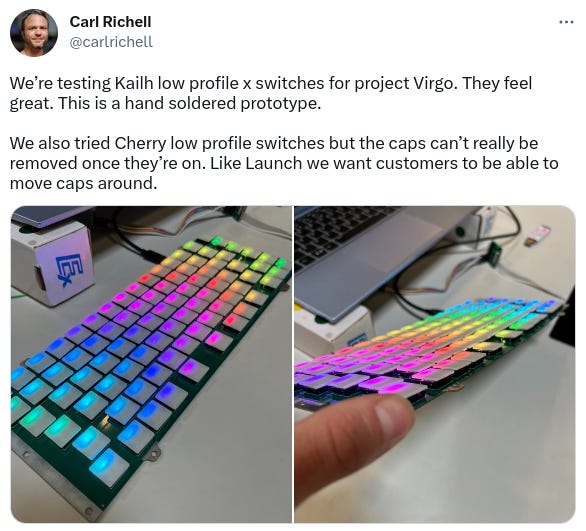Earlier this year, the Denver, Colorado based System76 sent out some behind-the-scenes photos and details of their upcoming "Virgo" laptop -- an open source (read: open hardware) laptop. Designed, from scratch, to run Linux.
Those initial tid-bits looked promising, but we really only knew a few details:
1) The outer enclosure was going to be milled from 6061 aluminum bar stock.

Obviously that was a (very) early prototype of the panel that went behind the laptop screen. Just the same, being milled from a solid piece of aluminum (as opposed to the lower quality parts we get with many laptop makers) was promising.
And 2) the company was testing out multiple types of key switches for the Virgo keyboard.

Despite those little glimpses... we really didn't know much about this new laptop -- other than it had truly piqued our interests. What were the specifications? What CPU would it use? How many (and what kind of) ports would it have? The details of the system remained veiled in mystery.
That has all changed.
In the most wonderfully crazy way.
The company has taken, what might just be, the most open approach to the design of a major piece of computer hardware in history... certainly in the last several decades.
System76 has now begun releasing the in-progress design files for the custom circuit board of their new Virgo laptop... as they design them. You can, quite literally, download the PCB design files as they are updated by the engineers.
So. I did what any good nerd would do when given access to a repository containing the PCB files of an unreleased, in-development laptop.
I downloaded them. Every single one.
What I found was pretty darned awesome. Here's what I've learned so far (including some of the specs).















